The hens get a warming treat of porridge on a cold day.
It’s now officially cold. Even those like me who resist central heating for as long as possible have found their fingers creeping over the thermostat dial in the evenings as we realise that the extra jumper might not cut it any longer. I’ve been shutting the doors on the hen coops to stop cold winds blowing through, and I notice that the chickens huddle closer together than they did in the summer.
One way I try to cheer the girls up is with a good bowl of warm porridge. I make this in the usual way, except with water, not milk, and leave it to cool a little longer than I would if I were the one eating it. Once it’s warm rather than hot, I ladle the gloopy mix into a big bowl for the hens, and serve it to them. On a chilly day it warms them up a bit and the oats give them a little more energy. It also gives them great joy.
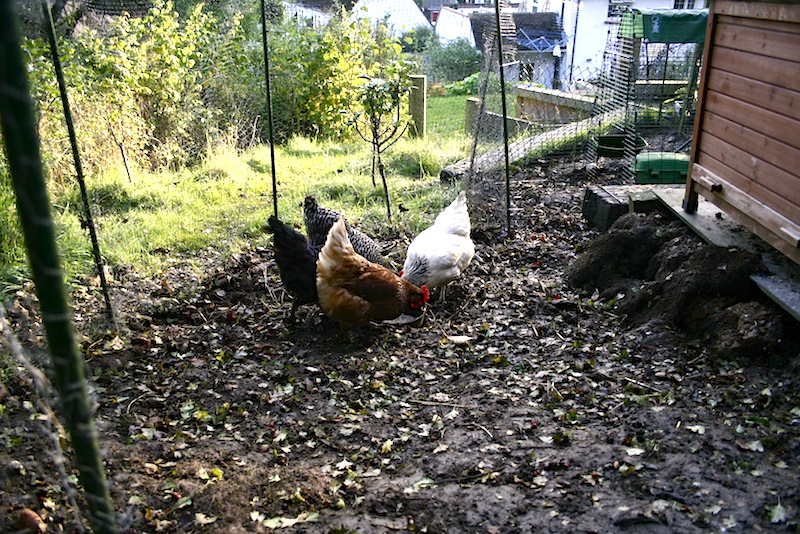
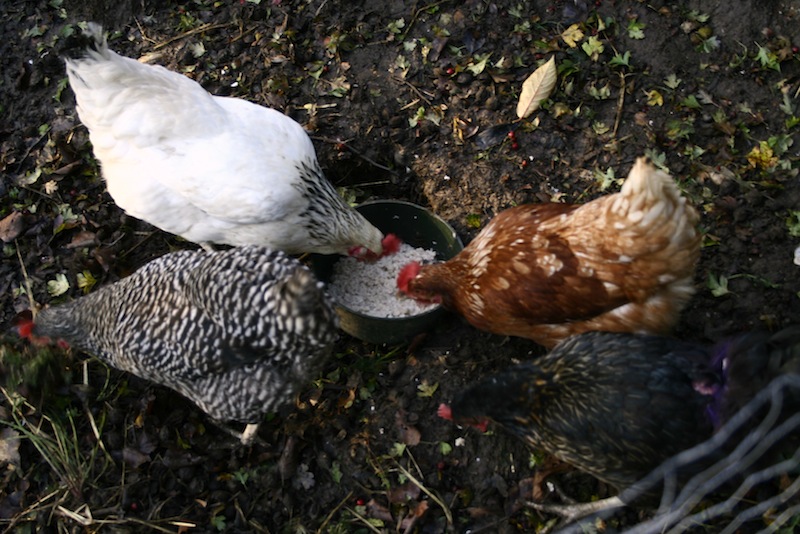
Yes, the girls are so excited about this warm treat that they’re dunking their faces in the porridge, which leads to them looking like this:
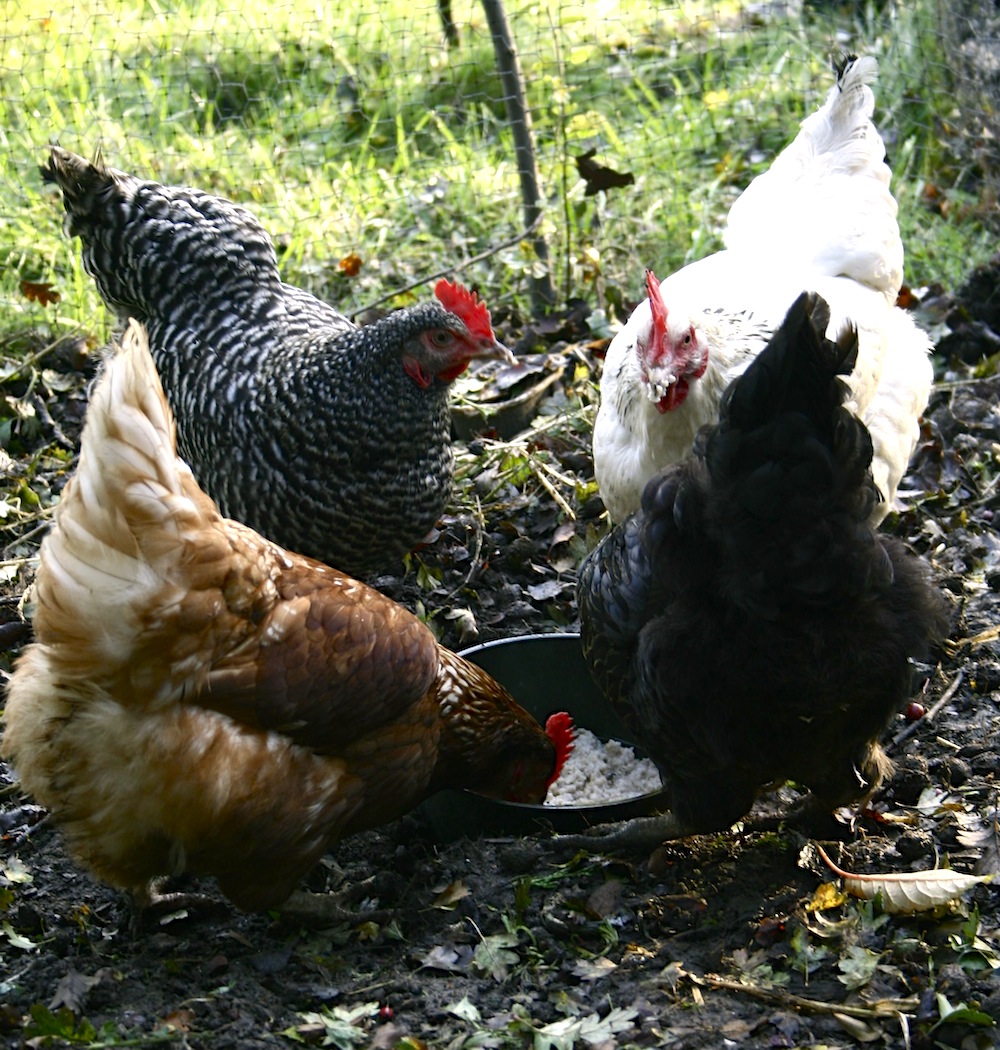
This is a nice treat for the chickens, but there are lots of boring things I also do to look after them. A couple of weeks ago, I put them on a course of Flubenvet, which is a wormer added to their feed, for seven days. You’re supposed to do this twice a year – I did it when I got them – to prevent a build-up of any nasties, and then give the birds other good things throughout the year to try to keep worms at bay. I got my Flubenvet from Doolittle’s Dispensary because Ryan, who has often written for F&F, now runs it (and has the most beautiful smallholding alongside it). It’s the only wormer you can get for small flocks in this country, and the good thing about it is that you can keep eating your hens’ eggs while they’re on the seven day course. Without worming, they can pick up all kinds of nasty things, including something called gapeworm, which is transmitted by slugs. My girls love eating slugs, and given the slug explosion we’ve had this year, they’re not exactly in short supply. So worming them is even more important.
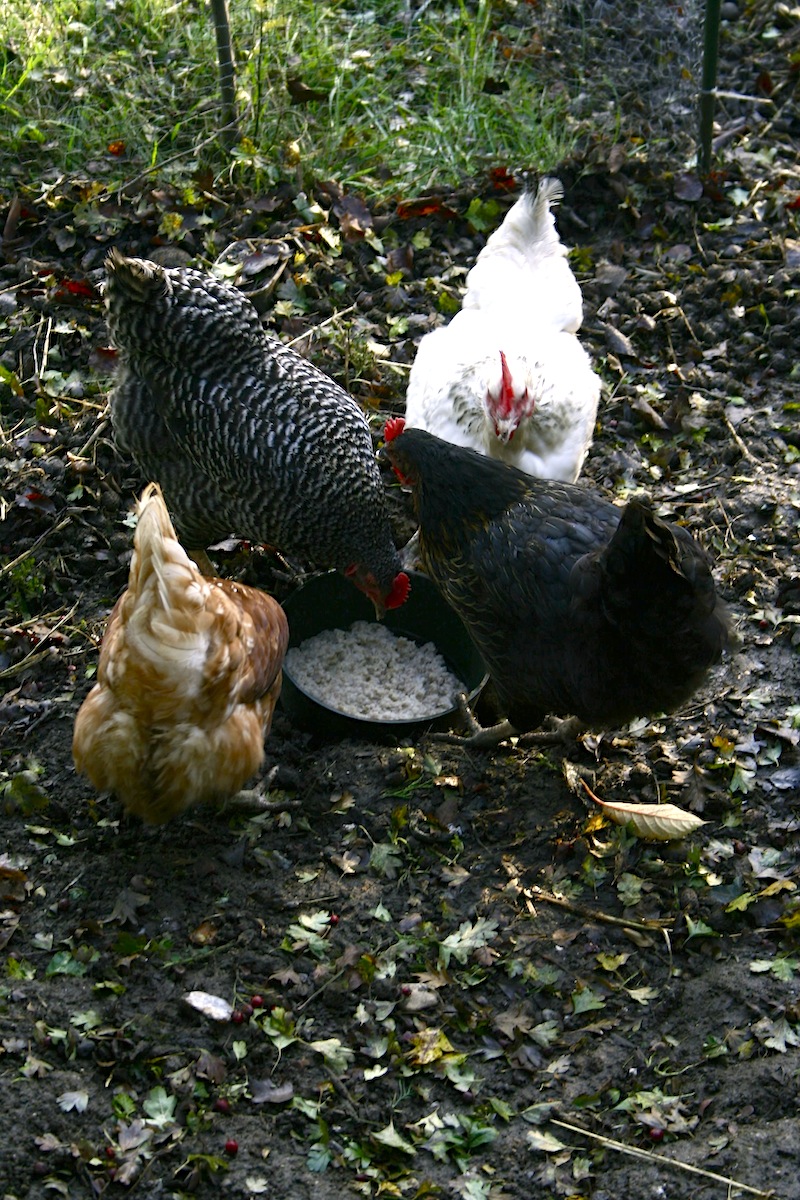
For the rest of the year, I mix diatomaceous earth in with their feed at a ratio of 2 per cent of the overall feed amount, and I give them pumpkins and cucumbers, which have natural worming properties too. But I don’t think it’s fair to go down the fully organic route – Ryan advised me that only Flubenvet would really keep my girls safe, and given he’s got a good flock of his own, I’ll take his advice.
You can see from these pictures that the girls have destroyed all the grass in their own garden, which is one of the reasons I let them free range on the lawn when I’m around as they do like eating vegetation. I’m creating a new bed and expanding another in the next few weeks, so they’ll get the turf from that, and in the spring I’ll fence off another area of their garden for a quick sowing of grass, even though that ever lasts as that long with four hungry mouths and eight big dinosaur feet.
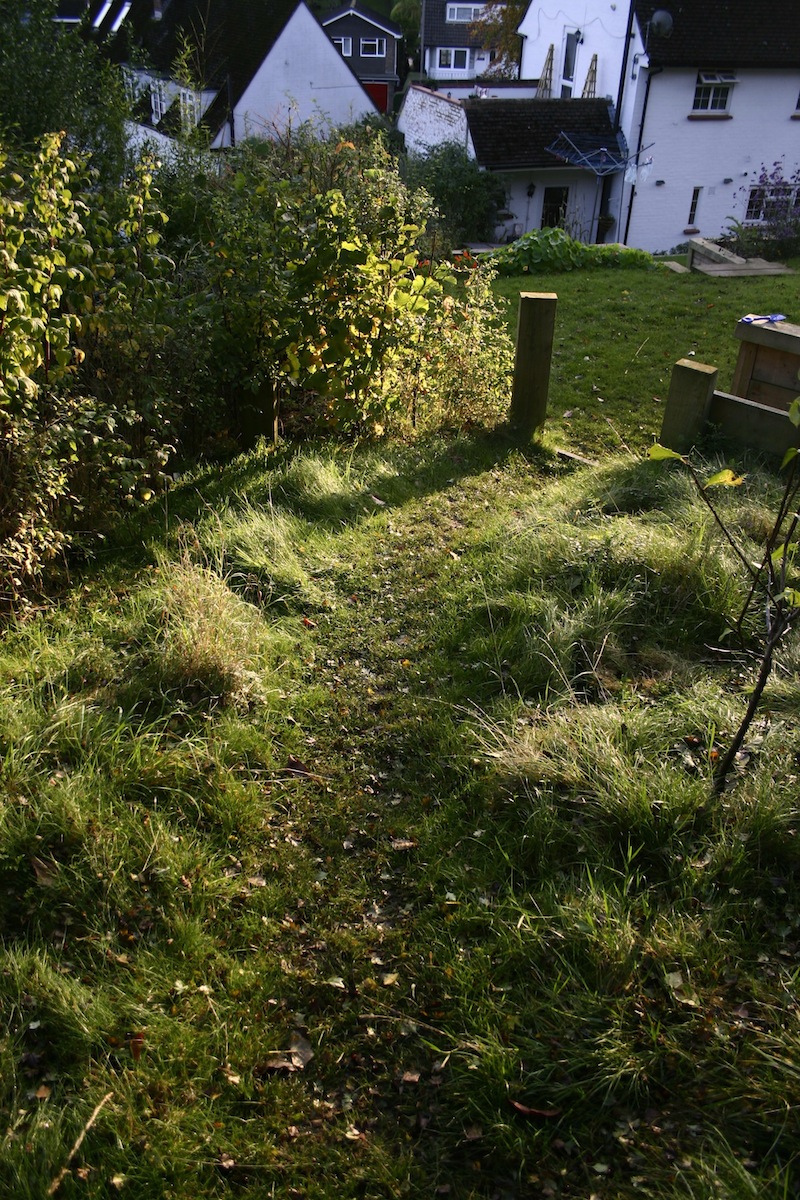
But I’d quite like to keep the area outside their garden looking like it does now, which I couldn’t do if the birds had free range of the whole garden.
Plus it’s not very safe for them – or a very good way of staying chums with the neighbours, as the birds could quite easily fly over our boundaries, even with clipped wings, and cause havoc next door. So I’ll just have to be a bit more creative about making their garden a fun place to scratch around in. I’ve had just the idea for autumn, but that’s for another post.

Leave a Reply